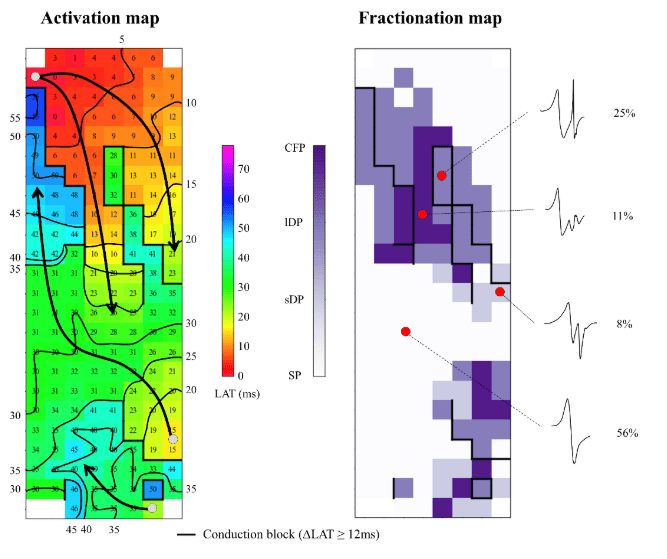Atrial Fibrillation Finger Printing
On the 18th of April 2020, the international journal Clinical Cardiology has published our manuscript ‘Atrial Fibrillation Fingerprinting; Spotting Bio-Electrical Markers to Early Recognize Atrial Fibrillation by the Use of a Bottom-Up Approach (AFFIP): Rationale and Design’. In this manuscript we describe some of the methods we use to unravel the mechanisms underlying atrial fibrillation.
Background: The exact pathophysiology of atrial fibrillation (AF) remains incompletely understood and treatment of AF is associated with high recurrence rates. Persistence of AF is rooted in the presence of electropathology, defined as complex electrical conduction disorders caused by structural damage of atrial tissue. The Atrial Fibrillation Fingerprinting (AFFIP) study aims to characterize electropathology, enabling development of a novel diagnostic instrument to predict AF onset and early progression.
Hypotheses: History of AF, development of postoperative AF, age, gender, underlying heart disease and other clinical characteristics impact the degree of electropathology.
Methods: This study is a prospective observational study with a planned duration of 48 months. Three study groups (all undergoing open-chest cardiac surgery) are defined:
- (longstanding) persistent AF patients
- paroxysmal AF patients and
- patients without a history of AF
Intraoperative high-resolution epicardial mapping is performed to identify the patient-specific electrical profile (figure below), whereas the patient-specific biological profile is assessed by evaluating proteostasis markers in blood samples and atrial appendage tissue samples.
Post-operative continuous rhythm monitoring is performed for detection of early post-operative AF. Late postoperative AF (during five-year follow-up) is documented by either electrocardiogram or 24-hour Holter registration.
Results: The required sample size for this study is estimated at 447 patients and patients are currently included.
Conclusion: The AFFIP study will elucidate whether electrophysiological and structural characteristics represent a novel diagnostic tool, the AF Fingerprint, to predict onset and early progression of AF in cardiac surgery patients.
The full English manuscript is available at:
https://onlinelibrary.wiley.com/doi/full/10.1002/clc.23370

Fig. 1 – Construction of the AF Fingerprint
The left panel shows an example of an activation map during electrically induced atrial fibrillation (AF) of the left pulmonary vein area in a patient undergoing coronary artery bypass grafting without a history of AF. Isochrones are drawn at 5ms, areas of conduction block (∆ local activation time (LAT) ≥ 12ms) are indicated by black bars and the origin of peripheral waves by grey dots. The arrows indicate main activation direction. The corresponding fractionation map is displayed in the right panel and shows the different types of atrial potential morphologies: single potentials (SP, one deflection), short double potentials (sDP, two deflections less than 15ms apart), long double potentials (lDP, two deflections 15ms or more apart) and complex fractionated potentials (CFP, three or more deflections). The maps are used to determine the incidence of e.g. fractionation and conduction block.
Do you know someone who might be interested in this?






